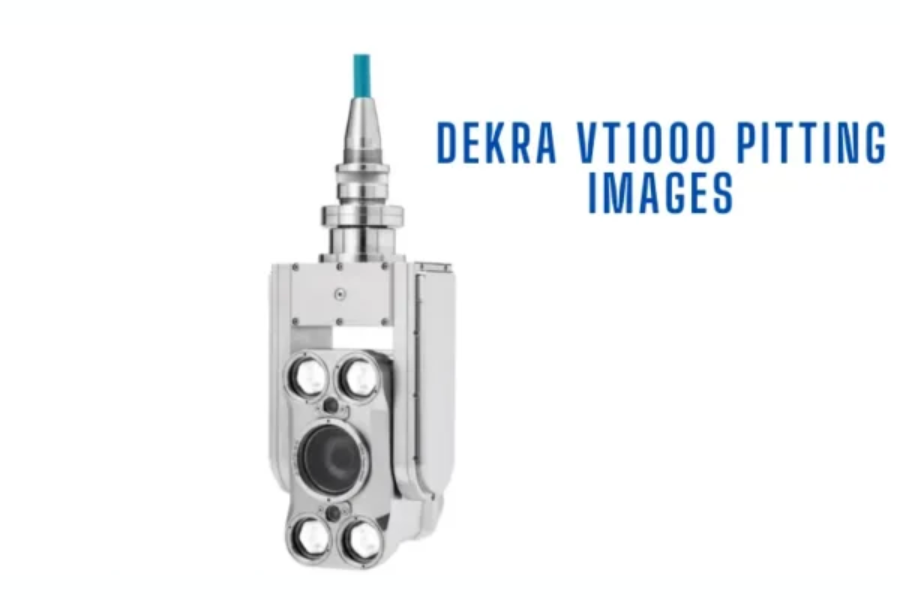DEKRA VT1000 Pitting Images: Key Information You Should Know
Are you wondering what the DEKRA VT1000 pitting images are and how they relate to vehicle inspections? If you’re in automotive maintenance, manage a fleet, or just want to know more about vehicle safety tech, you’re in the right place. We’re here to break down the essentials about these images so you can understand their importance and how they contribute to safer, more reliable vehicles.
In this article, we’ll explore what the DEKRA VT1000 device is, the role of pitting images in vehicle inspections, and the ways this technology enhances safety. By the end, you’ll have a clear understanding of how this tool works and why it’s gaining popularity among automotive professionals.
What is the DEKRA VT1000?
The DEKRA VT1000 is an innovative vehicle inspection device developed by DEKRA, a global authority in safety testing. This tool is designed to evaluate the condition of essential vehicle parts, including tires, brakes, and other critical components that impact road safety. One of its unique features is the ability to capture clear, detailed images that can reveal signs of pitting. Pitting consists of tiny holes or wear marks, especially on brake discs and tires, that can eventually compromise vehicle performance and safety.
Why Are Pitting Images Important?
Images captured by the DEKRA VT1000 help identify early signs of pitting, which may not be easily visible to the human eye. These high-resolution images support a more in-depth inspection, allowing potential issues to be addressed early before they escalate. For example, pitting on brake discs can reduce braking efficiency, making it harder for the vehicle to stop promptly and increasing accident risks.
With these images, mechanics, fleet managers, and drivers gain a better understanding of the current condition of each vehicle, making it easier to schedule repairs or replacements as needed.
How the DEKRA VT1000 Captures Pitting Images
The VT1000 uses advanced high-resolution cameras and sensors to scan vehicle components for signs of wear. Its precision in capturing the smallest pits and cracks surpasses that of standard human visual inspections. The VT1000 then uses sophisticated software to analyze the images and highlight any areas needing immediate attention.
Here’s an overview of how the DEKRA VT1000 works:
- Scanning: The device scans key vehicle components, including tires and brake discs, for signs of damage.
- Image Capture: It takes detailed images that reveal any wear or pitting.
- Analysis: The software examines these images to identify areas of concern.
- Reporting: Findings are compiled into an easy-to-read report for technicians and fleet managers to review.
Advantages of Using the DEKRA VT1000 for Pitting Detection
Using the DEKRA VT1000 for capturing and analyzing pitting images offers several important benefits:
- Enhanced Safety: Early detection of pitting allows for timely repairs, reducing risks of brake or tire failures on the road.
- Cost Efficiency: Spotting wear early on means repairs can be done before they escalate into expensive issues.
- Quick and Accurate Inspections: With its high-speed analysis, the VT1000 minimizes downtime and streamlines maintenance processes.
- Regulatory Compliance: Many industries require routine vehicle safety checks, and the VT1000’s comprehensive reports make it easier to meet these standards.
Interpreting DEKRA VT1000 Pitting Images
Reading and interpreting pitting images might seem challenging, but it’s more straightforward than you might think. These images typically show small, crater-like pits on surfaces like brake discs or tires. While these indentations might look minor, they can worsen over time and lead to significant safety risks if left unaddressed. For example, pitting on a brake disc can cause uneven braking, and pits on a tire can increase the chance of a blowout at high speeds.
When examining these images, look for clusters of pits or repeated wear patterns, which could indicate areas under excessive stress that may require prompt attention.
Common Causes of Pitting
Several factors contribute to the formation of pitting on vehicle parts:
- Corrosion: Brake discs, particularly in humid areas, can experience pitting due to rust formation.
- High Temperatures: Excessive heat from repeated braking can weaken metal surfaces, making them susceptible to pitting.
- Debris: Tiny stones, dirt, and other particles can get trapped on tires or brakes, causing pitting over time.
- Aging: Wear accumulates naturally over time, leading to pitting on older vehicle parts.
Preventing Pitting in Your Fleet
Preventing pitting is all about proactive and thorough maintenance. Regular inspections with tools like the DEKRA VT1000 help detect pitting early on. Additionally, keeping vehicle parts clean and free from debris reduces the risk of pitting. Choosing high-quality parts and avoiding exposure to corrosive elements can also help extend component life and minimize pitting.
Conclusion
The DEKRA VT1000 pitting images offer valuable insights for anyone involved in vehicle maintenance or fleet management. By capturing detailed images of critical areas, this technology allows for more accurate and thorough inspections, ultimately leading to safer vehicles.
Understanding pitting images and acting on the information they reveal can save time, reduce costs, and most importantly, help prevent accidents due to worn-out parts. In today’s world, where safety and efficiency are paramount, tools like the DEKRA VT1000 can be a game-changer in ensuring vehicle reliability.
FAQs
What is pitting in vehicles?
Pitting consists of small holes or indentations that can form on metal surfaces, such as brake discs or tires, due to factors like corrosion, heat, or wear.
How does the DEKRA VT1000 help in detecting pitting?
The VT1000 captures high-resolution images that reveal early signs of pitting, which might not be visible during a regular inspection.
Why are pitting images valuable?
They enable early detection of wear, helping prevent more serious issues from developing over time.
Can pitting impact vehicle safety?
Yes, untreated pitting can compromise components like brakes and tires, reducing performance and potentially increasing accident risks.
What causes pitting on brake discs?
Corrosion and excessive heat from frequent braking are common causes of pitting on brake discs.
How can I prevent pitting in my fleet?
Regular inspections, keeping parts clean, and using quality materials can help reduce pitting in fleet vehicles.
Unlock the latest insights and trends in app development at theappkod.







